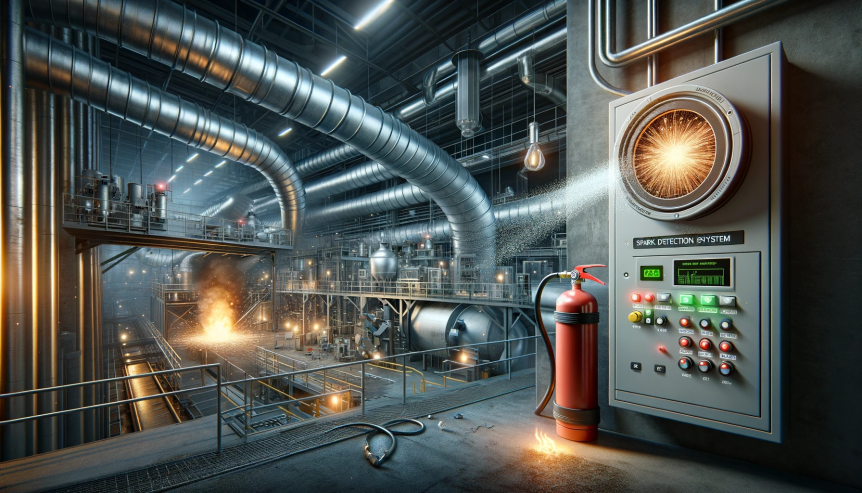In the vast landscape of industrial safety measures, spark detection systems stand out as a critical technology designed to prevent fires before they start. These systems are not just an added layer of protection; they are an essential component of a comprehensive fire safety strategy in various industrial settings. From woodworking to textiles, and from grain processing to recycling facilities, understanding the fundamental principles of spark detection technology is key to mitigating fire risks. This article delves into how these systems work, their components, and their indispensable role in safeguarding industries against fire hazards.
Understanding spark detection technology
Spark detection technology is designed to identify and respond to the incipient sparks or embers that could ignite materials in industrial processes. These systems are particularly crucial in industries where combustible materials are processed, handled, or transported. The principle behind spark detection is relatively straightforward yet highly sophisticated: it involves the detection of abnormal heat signatures or light emissions from sparks or embers and immediately initiating a response to extinguish or remove the ignition source before it can cause a fire or explosion.
Components of spark detection systems
A typical spark detection system comprises several key components, each playing a vital role in the detection and suppression process:
Sensors: These are installed at strategic points along ducts or conveyors to detect sparks or embers. They utilize infrared or optical sensors to identify the unique heat or light signatures of sparks.
Control panel: This component serves as the brain of the system, receiving signals from the sensors and activating the appropriate response mechanisms.
Extinguishing units: Upon detection of a spark, these units are triggered to extinguish it, often using water mist, CO2, or other suppression agents.
Isolation valves: These are used to isolate sections of the processing system to prevent the spread of sparks to other areas.
Alarm systems: To alert personnel of the detection and suppression activities, ensuring that any necessary manual interventions can be made promptly.
The critical role in industrial fire prevention
The importance of spark detection systems in industrial settings cannot be overstated. They provide several key benefits:
Immediate response: By detecting and addressing sparks in real-time, these systems can prevent fires and explosions that could result from delayed response.
Protection of assets and lives: Spark detection systems help protect not just the physical assets of a facility but, more importantly, the lives of the employees.
Regulatory compliance: Many industries are subject to strict fire safety regulations. Implementing spark detection systems helps businesses comply with these regulations, avoiding potential fines and legal issues.
Minimizing downtime: By preventing fires, these systems minimize unplanned downtime, ensuring that production processes are not interrupted.
Implementing spark detection systems
The implementation of spark detection systems should be considered an integral part of any industrial facility’s fire prevention and safety strategy. It involves a thorough assessment of the facility to identify potential risk areas, followed by the strategic placement of sensors and suppression units. Regular maintenance and testing of the system are crucial to ensure its reliability and effectiveness.
In conclusion, spark detection systems are a vital component in the prevention of industrial fires. Their ability to detect and suppress ignition sources in real-time makes them an indispensable tool in protecting industrial facilities from the devastating impact of fires. As technology advances, these systems continue to improve, offering even greater levels of protection and peace of mind for businesses across various industries. By understanding and implementing these essential systems, companies can significantly mitigate the risk of fire, ensuring a safer working environment for all.

